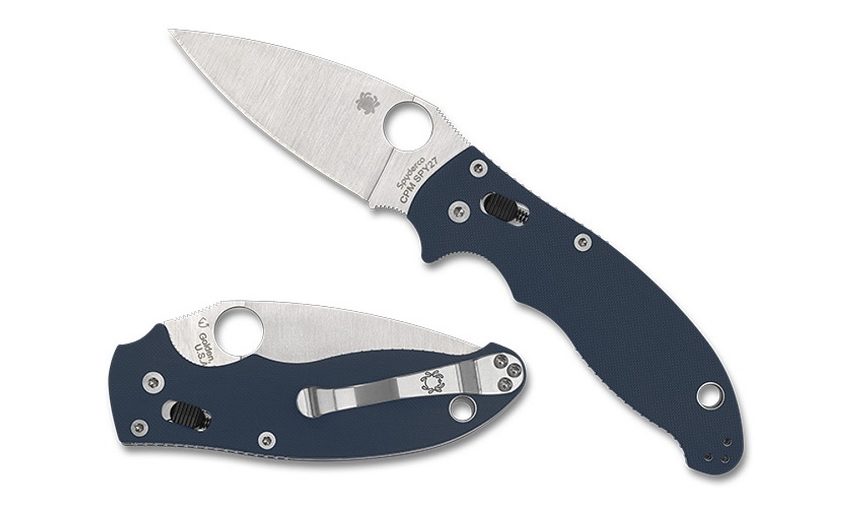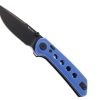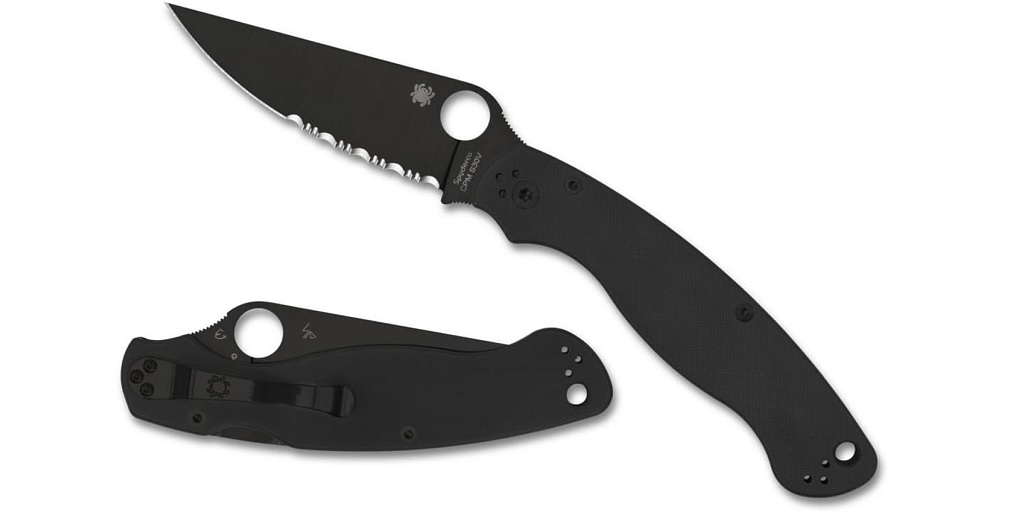Getting a Serviceable Edge on Your Spyderco Pocket Knife

Two of the great things about your Spyderco pocket knife are that it (probably) has synthetic scales, and that it (also probably) has a full flat grind.
By and large, Spyderco knives embody these features. This makes it easy to resharpen them (the flat grind is forgiving) and if you accidentally slip and gouge the scales on a sharpening stone, it won’t be like you just ruined a horn or stacked leather handle.
So, let’s say you’re here because your Spyderco pocket knife is somewhat less than sharp.
Here’s how to get it back up to speed.
The Sharpening Stones: How to Bring Back the Edge
First, you’ll need a good set of sharpening stones. What you’ll need will depend on how dull your knife is, but we’re going to assume that it’s still sort of sharp. Like – you could cut with a little effort, but it’s too dull to cut easily.
In that case, you’ll need a 400 to 600 grit stone, a 1000 grit stone, and a strop. This is a relatively simple process.
First, clean off the blade. If you try to sharpen a dirty blade, you will gum up your stone.
Then, start with the coarser stone of the two – that’s your 400 to 600 grit stone. Put some water on the surface. You can use oil, but be aware that if you do you can never get the oil out. It’s safer to use water, which evaporates.
The purpose of wetting the stone is to keep the stone’s pores clear and free of fine metal swarf.
Then, lay your Spydero pocket knife, flat of the blade down, on the stone. Raise the spine about a centimeter from the stone so that only the edge is in contact with the stone.
Depending on your blade’s dimensions, this will give you an angle between 15° and 20° or so. This is perfect for resharpening.
Pass the knife forward, as though you are trying to shave a small sliver off the top of the sharpening stone.
Repeat this process between 20 and 30 passes, then check the edge. You should feel a small, raised ridge along it. This is called a burr and will need to be removed.
You remove this by turning the knife over and repeating the process on the other side. Give the blade the same number of passes.
Check the edge again. After restoration on the coarser stone, it should be sharp but not quite scary sharp.
To finish it off, repeat the whole process on your 1000 grit stone. By the end of it, the knife should be nearly sharp enough to shave.
The Test of True Sharpness
After touching up your Spyderco pocket knife on two grades of sharpening stones up to 1000 grit, it should be reasonably sharp.
There are two good ways to test this. One is with your arm hair, the other is on paper.
Start by trying to shave a little bit of hair off your arm. If it shaves, you’ve done it. If it sticks a little, it might still be sharp but not truly shaving sharp (which is hard to do anyway).
Check it by slicing a few pieces of scrap paper. If it can run through these without hanging up or tearing the paper excessively, you’re good to go.
Here for a New Spyderco Pocket Knife (or Sharpening Stones)?
Want to expand your current collection with a new Spyderco pocket knife? Here because you need a new set of sharpening stones?
Either way, White Mountain Knives has you covered. Check out their collection; they offer a massive inventory of popular knives and tools from the top brands (Spyderco is just one of many) and they also carry a wide variety of sharpening stones, rods, systems, and kits.
For more information about Best Cold Steel Knife and Good Pocket Knife Brands please visit:- White Mountain Knives, LLC


